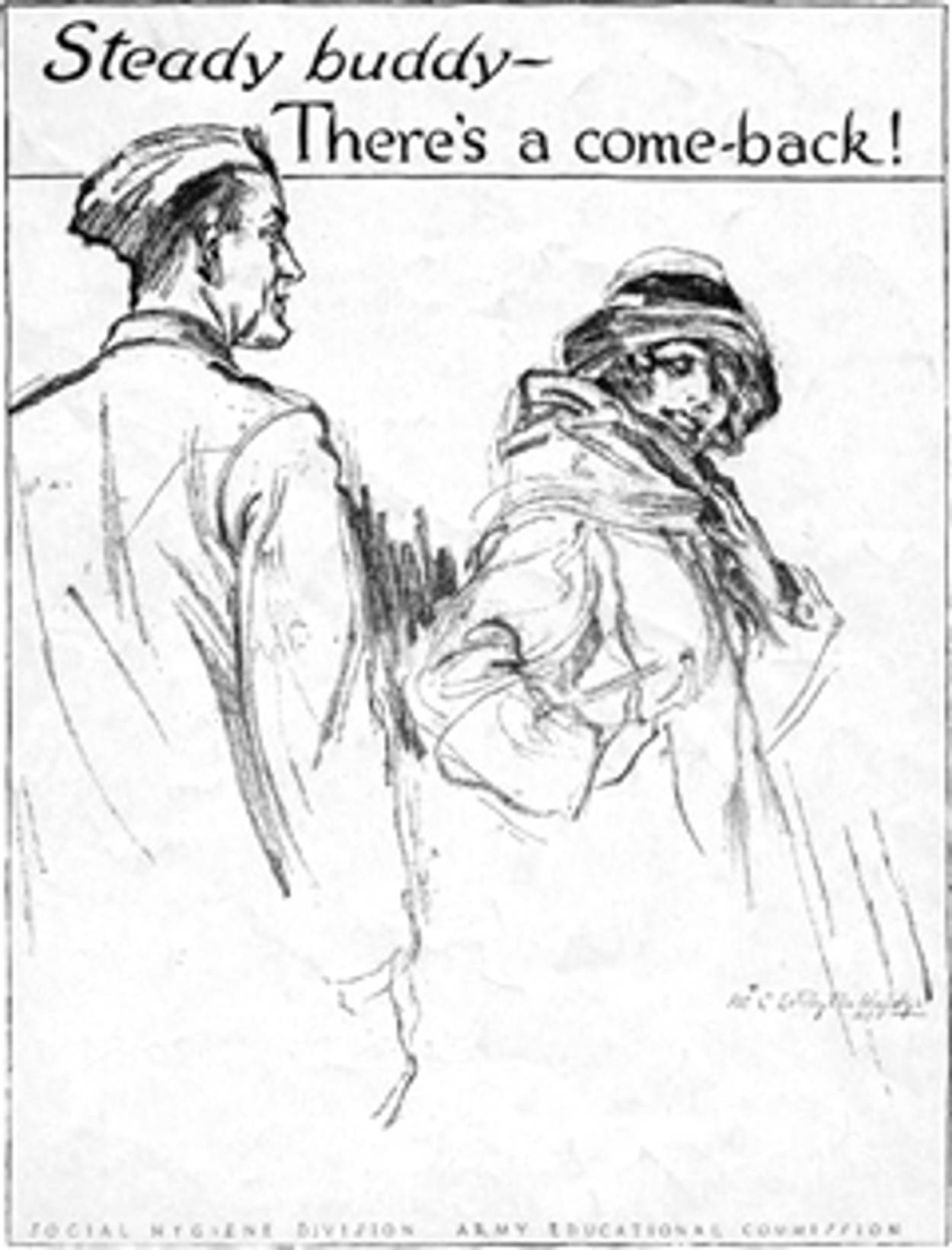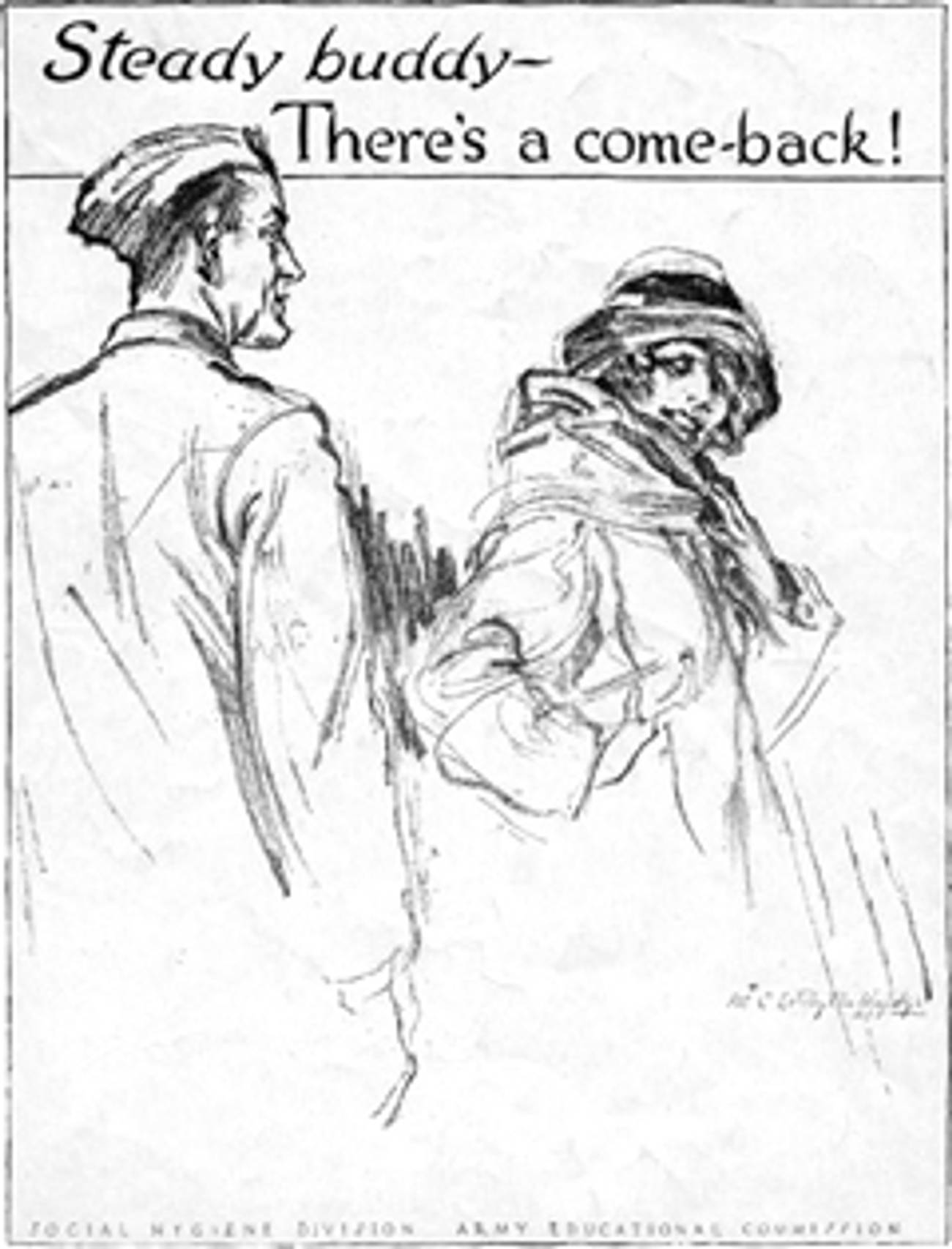Forgotten Women
A novelist brings to life a shameful episode in American history




Like the heroines in the sensational dime novels she devours, Frieda Mintz—the main character of Michael Lowenthal’s third novel, Charity Girl—is a young, working-class girl trying to make her living. Set in 1918 Boston, the novel follows Frieda as she runs away from home and falls in love with Felix Morse, a soldier and the son of a wealthy businessman. Charismatic, romantic, and crazy about the Red Sox, Felix spends one day with Frieda before his departure for the Western Front. When he returns to his army camp and doctors discover he has a venereal disease, Frieda gets caught in a shocking turn of events based on a little-known episode in American history.
Supported by an act of Congress, military leaders and social reformers during World War I detained and quarantined some 15,000 young women, without hearings or judicial oversight, in an effort to protect soldiers. Setting his latest novel against this historical backdrop, Lowenthal turns again to themes he explored in his first two novels: issues of sexual and religious identity, desire, and the individual’s place in society.
In the author’s note to the novel on your website, you write that you learned of these detention centers from a reference in Susan Sontag’s book AIDS and Its Metaphors. You also write that a friend once told you the worst kind of shame “comes from not even realizing you were meant to feel ashamed”—which you note is the kind you felt as a boy when you realized you were gay. That’s certainly what Frieda contends with as well. How intentionally did you make your novel a metaphor for AIDS or homosexuality?
I had given a lot of thought as to whether I should begin the novel with a contemporary frame so that I could more clearly draw those parallels with AIDS and contemporary sexuality, and even the current so-called war on terrorism. But whenever I tried to do that, it just ended up seeming really heavy-handed to me, and too obvious. So I decided if the story wasn’t clear enough in its own right to make those parallels obvious then I wasn’t telling it correctly. I hope that the parallels and the metaphorical implications for our own time exist in the spaces between the sentences of the novel.
And at the very end I do, briefly, bring the story up to World War II, just to give a sense of the larger historical sweep and to acknowledge that this was not an isolated incident but that it casts a shadow over the future—although I didn’t absolutely say our future. I hope that just the mention of World War II gets readers making the connections to different kinds of detention camps.
One of your reviewers has written that Frieda is appealing because she’s an ordinary girl, but Frieda wouldn’t have liked this characterization. She wants to be special, as her father had said she was, rather than just another regular girl, as her mother tells her. How is that tension heightened for Frieda as a first-generation American?
You know, it’s an old story, told many times, about immigrants coming to this country and being tightly controlling of their children, perhaps because in the New World everything seems frighteningly looser, but also because there’s often the parents who want to look good, to represent well for their culture, and don’t want the younger generation to do anything to bring shame upon them or the larger culture.
But it’s ironic, in a way, because people like Frieda’s parents, and immigrants in general, are paragons of this notion of taking risks and enduring hardship to follow your dreams or passions. It’s such a remarkable leap to make, and I have unbounded respect for immigrants then and now. From the sidelines of writing the book, I wished that Frieda could pull back and be able to respect her mother a little more for that.
Were many Jewish women in these detention homes?
Social workers interviewed about a third of the women who were held in these detention homes, and it was billed as the first national study of delinquency. So there are interesting numbers to look at, and I found that there weren’t particularly a lot of Jewish women.
So why did you make your heroine Jewish?
I worried about making Frieda Jewish because I didn’t want to play into the notion, which was so prevalent in that time, of scapegoating Jews and immigrants as forces of immorality who were tainting the pure, upright, American culture. There was a whole strain of stories about these hook-nosed, beady-eyed men who would capture girls, sometime drugging them, and turn them into white slaves; I use it in the book when someone says it’s the Jews and Italians that run all of the prostitution rings.
So while I worried about that, I made Frieda Jewish partly because it was just a gut thing. It was one of my ways of entering into the material, as somebody who is living almost a hundred years later and is of a different gender and a different social class and upbringing from the main character. I needed to find ways in which I could map my own experiences and emotions onto Freida’s. So having her be Jewish and dealing with those questions of religiosity really helped me to imagine my way into her head.
As a period piece, Charity Girl is a departure from your first two novels, The Same Embrace and Avoidance, which were both quite contemporary. Was it hard to inhabit that different space?
Somehow it didn’t occur to me until I was already deep into this that I would have to know, not just the history of girls being sent to detention homes and the history of venereal disease treatment at the time, but—since a novel is so much about moving a character out of the chair, across the room, and through the door—I would have to know what kind of chairs people sat in, and what kind of shoes they wore so that I would know whether they were buttoned or laced. Just to steep myself in that kind of material was a monumental task.
When she meets Felix, Frieda is already sexually experienced. As a young girl, she engages in some childish experimentation that turns into a sexual relationship with a neighborhood Italian boy. Why was that development necessary for your story?
That was actually the first scene I wrote, and it was my attempt to connect emotionally with her and find the core of her character. I know from my research—and I can well imagine—that during that period, for a girl of Frieda’s age and station to get caught having sex with anybody would have been a pretty serious thing. But to have a relationship with a non-Jewish boy would have been a complete nightmare for the family. Just in terms of plot I needed Frieda to do something that would be considered so egregious that her parents’ dire reaction to it would seem plausible for readers. That’s why I had her not only transgressing sexual bounds but religious/racial/cultural bounds as well.
There is only one other Jewish girl, Yetta, in the detention home when Frieda arrives, but Frieda shies away from her. Why?
As someone who has fled from her own background of Jewishness and wants to get as far away from her mother and everything her mother represents, Frieda finds Yetta “too Jewish.” Yetta greets her in Yiddish, which is the sound that Frieda has been trying to get away from, and she is put off by her, put off by being approached with this assumption that they will bond because they’re both Jewish. Frieda hates having anybody make assumptions about her based on the expectations of what she should be. But it’s too bad, because Yetta represents another strong strain of Jewish culture that’s about challenging authority and standing up for the rights of individuals and the downtrodden. She’s part of that activist, Lower East Side culture that I myself also greatly admire, and I think, I hope, that Frieda comes to respect Yetta more because of that.
How were the detention homes disbanded?
After the war, the special act that Congress had passed ran out, and there was a demobilization period. Most of the homes just fell into disuse or were disbanded. Some of them suffered fires, a few that had been preexisting reformatories for girls continued on in that role—not specifically as homes for venereal disease patients but just for juvenile delinquents, or so-called wayward girls. Within a few years of the war just about all of these detention homes were gone, as I understand it.
Was there ever any public outcry?
There was very little. Just a small handful of women, mostly Quaker women, protested during the war. And the head of the Committee on Protective Work for Girls—the person in charge of the War Department’s efforts—realized, part way through, that this wasn’t what she hoped it would be, and she resigned. But her public resignation didn’t make clear her grave misgivings about the program; only in a private letter to one of her fellow feminist reformers does she make clear that she was really upset about the turn from what she thought would be protection of girls to punishment of girls.
But I try to imagine the time, and in my own mind I thought of…that feeling in the weeks and months after 9/11, when there were flags everywhere, on every highway overpass and every yard, and people were shouting at and harassing any man in a turban. That was such a hard time to live through, but from what I’ve read, the World War I period in America was like that times ten, in terms of the rabidness of people’s hatred of the enemy. I think it would have been just such a difficult context in which to protest something like this. I try to look back with a little bit of compassion for the people who failed to speak out.